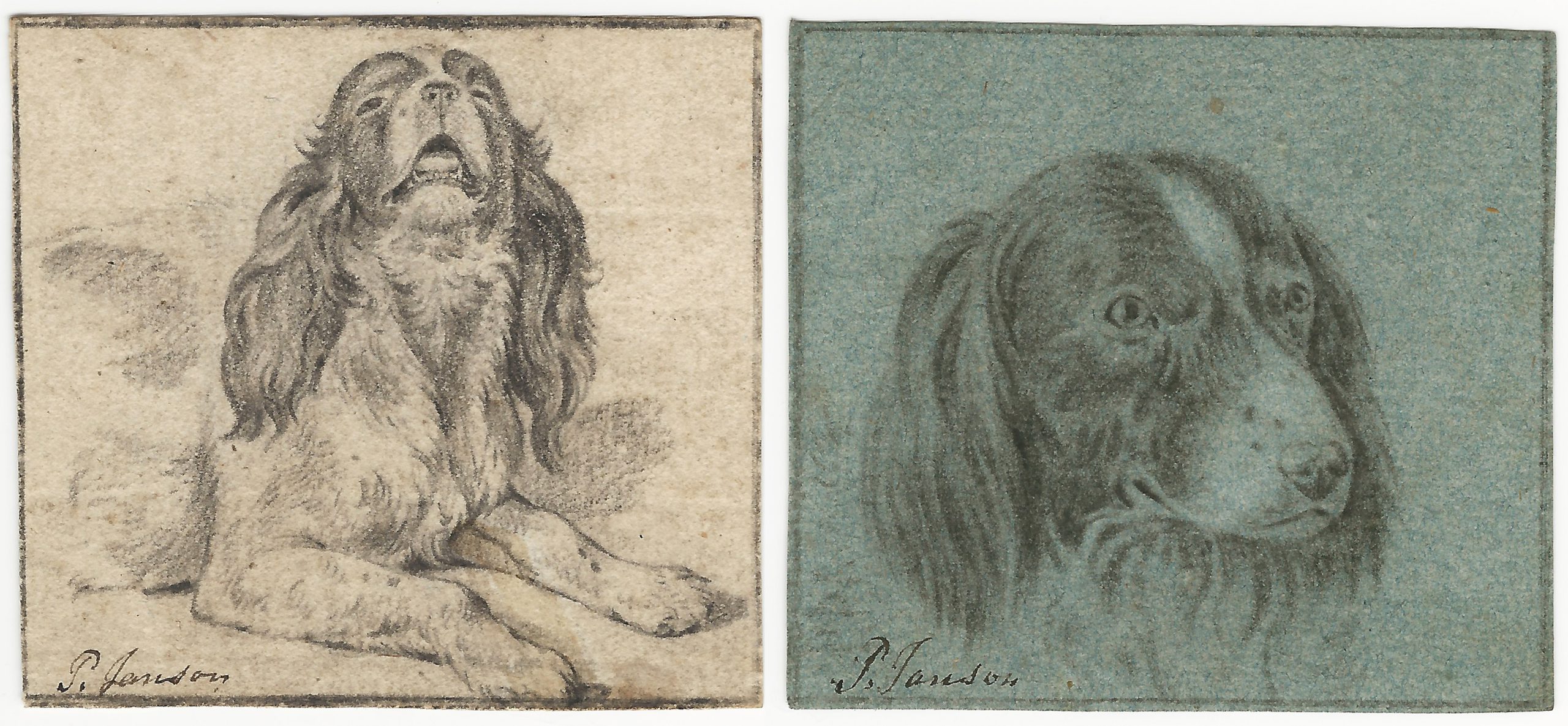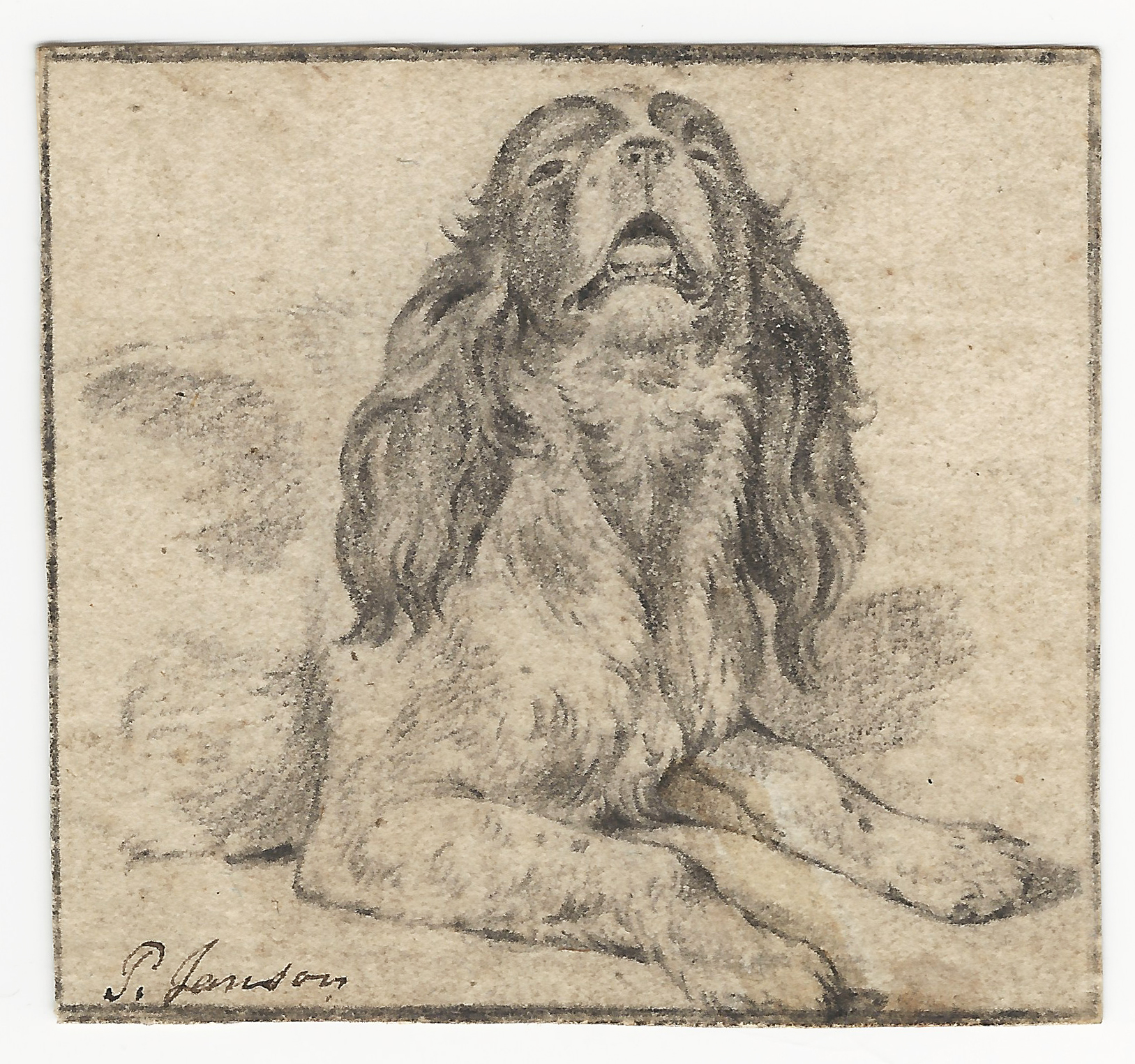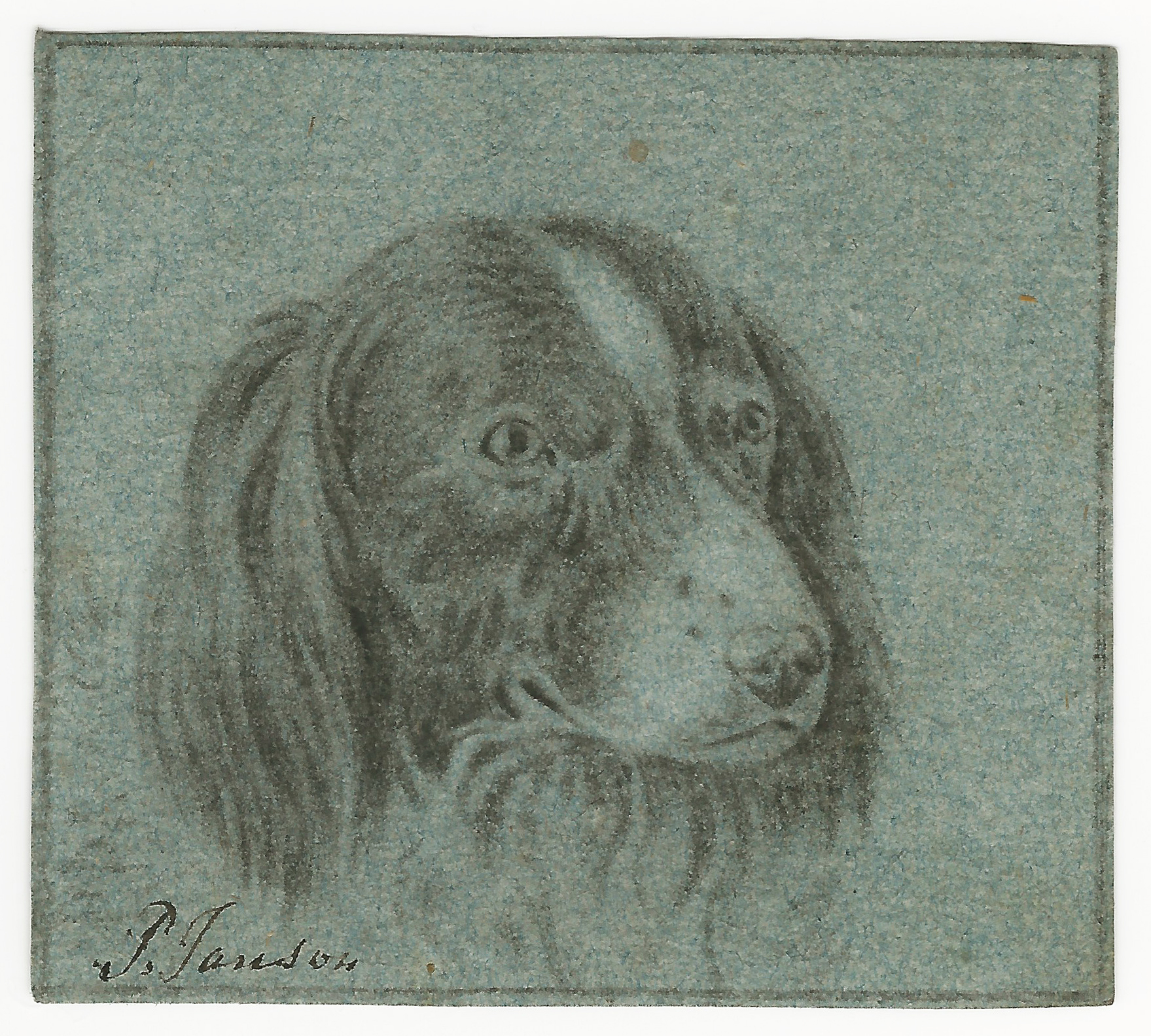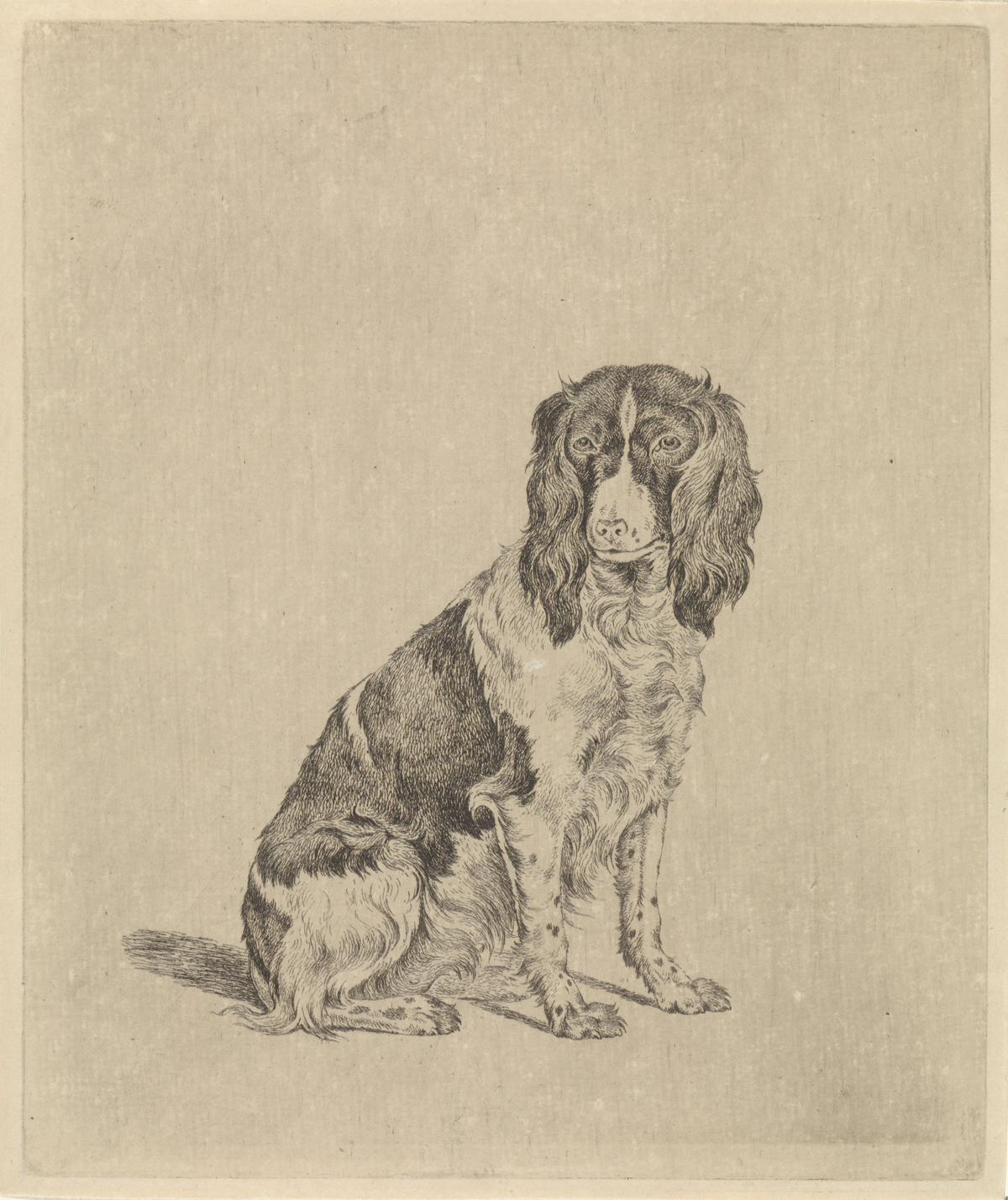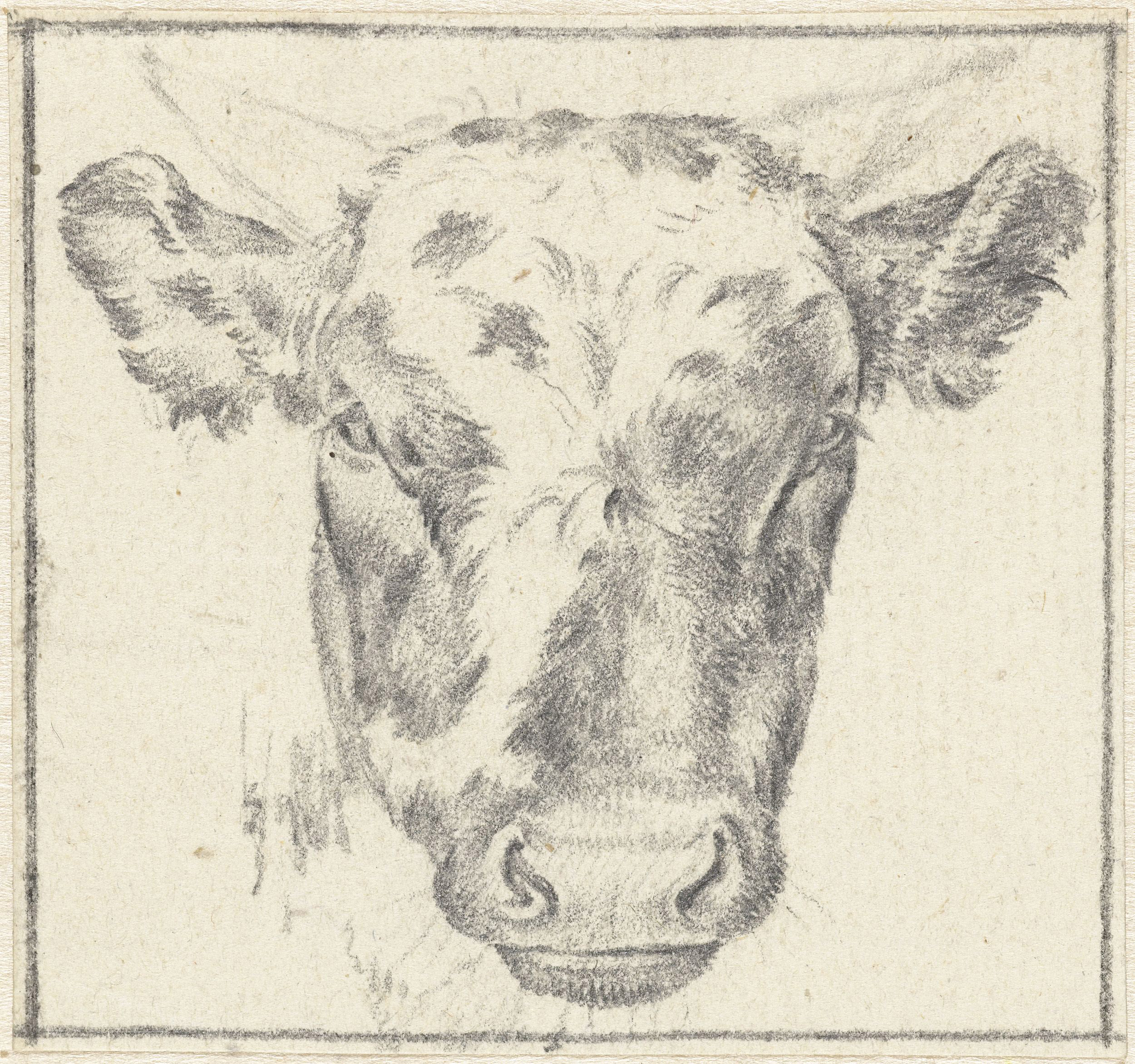PIETER JANSON (Bois le Duc 1765 – 1851 Arnhem)
Pieter Janson (Bois le Duc 1765 – 1851 Arnhem)
Two Studies of Partridge Dogs
Black chalk, black chalk framing lines, 59 x 63 mm (2.3 x 2.5 inch) and black and white chalk on blue paper, black chalk framing lines, 62 x 70 mm (2.4 x 2.8 inch)
Both signed or inscribed ‘P. Janson’ (pen and black ink, lower left)
Provenance
~ Possibly sale Jan van der Maas and widow Paulus van Speyk, Rotterdam (Constant), 30 June 1783, Album B, no. 165, ‘Twee honden, uitvoerig met Potlood geteekend, door P. Jonson, twee stuks’.1
~ Possibly anonymous sale, Delfos, Honkoop, Leiden, 28 October 1800, Album D, no. 38: ‘P. JANZON. Twee Patryshondjes, een staande Kalf en een liggende Windhond, vier stuks, door P. Janzon’, sold fl. 2-12.
~ Private collection, The Netherlands
***
Together with his elder brother Johannes Christiaan Janson (1763–1823), the long-lived Pieter was first taught by his father, the Leiden artist Johannes Janson (1729–1784).2 Pieter appears to have been quite an active draughtsman in his late teens: drawings by his hand are mentioned in contemporary sale catalogues when he was only about eighteen years old, including – possibly – the present two studies of dogs. From historic auction catalogues he is also known to have made copy drawings after Paulus Potter.3
Like his brother, he however joined the ‘Staatsleger’ (army of the Dutch States) and as an officer was actively involved in the Napoleonic wars, fighting in Germany and Poland in the early years of the nineteenth century. According to the biographers Roeland van Eijnden and Adriaen van der Willigen, he was seriously injured but recovered and settled in the ‘agreeable surroudings’ of the city of Arnhem, where he again took up the artistic pursuits of his youth, by then awarded the rank of ‘majoor buiten dienst’ (retired major).4 Major Janson actively participated in exhibitions in the early decades of the century and his paintings were collected by the cream of contemporary society. In 1821, ‘Majoor’ (major) P. Janson exhibited a ‘schilderij met Koeijen’ (painting with cows) at the exhibition of living masters at The Hague.5 In 1831 Baron Steengracht van Oost-Capelle of The Hague donated a painting by Janson represent an old woman talking to a herring seller, to be included in a raffle.6
At least two other drawings of dogs by Janson are known from a historic sale catalogue, executed in graphite on vellum.7 Our drawing on blue paper could almost be a study for one of Janson’s most iconic etchings, the Seated Partridge Dog (‘patrijshond’) (fig.).8 A study of a calf’s head in comparable precise technique is preserved in the Rijksprentenkabinet, Amsterdam (fig.).9
SOLD
1. These two drawings are however more likely to be identical with the two drawings of dogs in pencil on vellum mentioned below in note 7.
2. For the artist, see: A. Polman, 'Vaardige cadetten en creatieve officieren. De opkomst van het artistieke handtekenen binnen de officiersopleiding tot en met de Koninklijke Militaire Academie', Armamentaria. Jaarboek Legermuseum 37 (2002), pp. 31-57.
3. For instance in sale Goll van Franckenstein, Amsterdam (De Vries … Roos), 1 July 1833, Album FF, no. 15, ‘Eene Weide met drie rundbeesten; als voren [met sapverwen] naar P. Potter, door P. Janson.’ (sold to ‘Rombouts’ for fl. 50).
4. Roeland van Eijnden and Adriaan van der Willigen, Geschiedenis der Vaderlandsche Schilderkunst, Amsterdam 1979 (Haarlem 1816-1840), vol II, p. 107.
5. Lijst der kunstwerken van nog in leven zijnde Nederlandsche meesters en kunstliefhebbers, welke zijn toegelaten tot de tentoonstelling in 's Gravenhage, gedurende de maand october 1821, The Hague 1821, no. 70.
6. Lijst van kunstwerken, door beoefenaars en verzamelaars bijeengebracht, om verloot te worden ten behoeve van Het Vaderland, Amsterdam 1831, no. 1188.
7. Anonymous sale, Amsterdam (Van der Schley … Pruyssenaar), 22 March 1802, Album P, no. 7, ‘Twee stuks, een Rustend en een staand Hondje; uitvoerig op parkament met Potlood geteekend, door P. Janson’ (sold to ‘Pruissenaar’ for fl. 7).
8. Etching, state 1 of 4, 170 x 142 mm, this impression in the Rijksprentenkabinet, Amsterdam, inv. no. RP-P-1882-A-5753, Het eigen geëtste werk van Johannes Janson de Vader, s.l., s.a., p. 212, cat.no. 71.
9. Pencil, 53 x 57 mm, inv. no. RP-T-1886-A-590.
